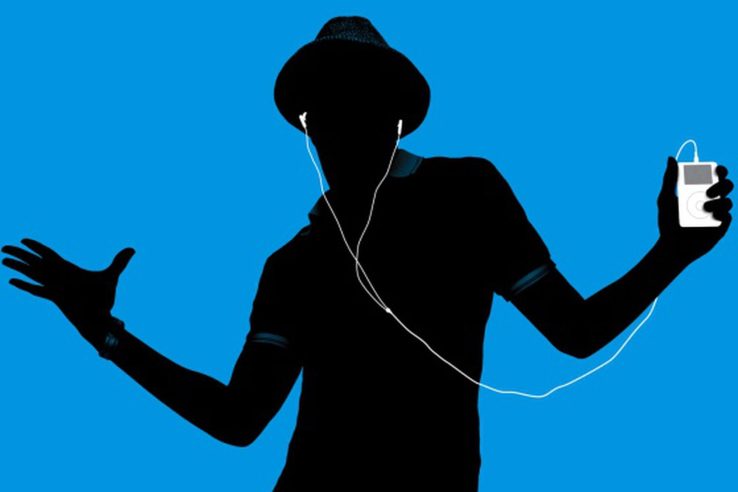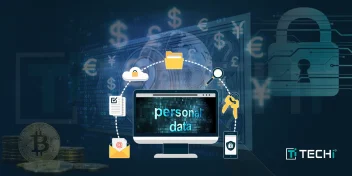The music industry, while far from perfect, is finally beginning to take baby steps in the right direction. Nowadays, “Gettin’ Jiggy Wit It” is easier than ever before because of the numerous music services that have sprung up recently. But with the competition heating up and changes on the horizon, an important question arises: which of these players will ultimately bring music to our ears?
The music industry is transforming itself. The big boys are beginning to let up on crazy restrictions and realizing that giving everyone affordable access is the key to encouraging growth. Many changes, however, are required. It requires new business models, it requires plenty of risk, and, most importantly, it requires changes to the way music is distributed and consumed.
Change is coming.
The “Old” Way: Digital Downloads
The competition is fierce, yet heavily skewed, in the fight for digital music download supremacy. Apple is, by an overwhelming margin, the leader of the pack. The company controls around 70 percent of digital music download — and 28 percent of overall retail music — market share in the U.S alone. Amazon comes in at second place with around 12 percent, but the company has been
gaining ground. Zune Marketplace, Walmart, Napster, and Rhapsody are hardly worth mentioning with under 2 percent market share.
But it is smooth sailing for Apple. Barring a revolt from the music industry or massive screw up from Apple, it seems clear that the company is the clear-cut victor in the battle for digital music downloads. Furthermore, now that Apple has been given permission to distribute DRM-free music, there is generally few reasons to go elsewhere for legal music download. However, there is a catch.
For the same consumers, this pricing model could prove to be a bit expensive. It is difficult, if not impossible, for some consumers to enjoy Apple’s expansive library of music. The 30-second demos won’t cut it, but spending $1.29 on a song (particularly if we multiply that by a few hundred songs) that might be listened to once or twice doesn’t seem particularly fair these days either.
But there is another way!
The New Way: Streaming

The script has been flipped with the groundswell of streaming music services. Not only do they meet the needs of many consumers, but they also make great financial sense for many of these consumers as well — not to mention that this model could prove to be attractive for those looking to begin acquiring music legally. With all-you-can-eat deals for a few bucks a month, it must make one wonder if the concept of paying for songs or albums in the future will make sense.
Only recently has this type of music service come into the spotlight. In the past, there have only been a few small competitors — MOG, iLike, Last.FM, MOG, Thumbplay, Grooveshark, Slacker, etc. — but all bets are off later this year when Google, Apple, and others have their say.
Speaking of Big G, the company is making
much noise with the widespread talk about their new music streaming service that is allegedly coming to an Internet near you at the end of this year. The news is that Google has already secured deals from many of the music industry’s powerhouses, and with those deals, it is rumored that the company will offer a a music streaming service that will
hopefully be available soon for a monthly fee.
Granted, many details are speculative, but it would be a smart move, especially when considering the company’s push for dominance in the cloud. With one of the fastest growing mobile platforms in Android, the most popular search engine in the States, and a plethora of other online services — not to mention that it couldn’t hurt to have something that is of equal value to music streaming as YouTube is with video streaming — this whole music streaming thing could prove to be extremely valuable.
Apple really raised eyebrows when it acquired the fantastic music service Lala, which, in an ironic twist, previously integrated with Google Search. Unfortunately,
things aren’t going so smoothly. One of the founders of Lala left Apple recently. Furthermore, there is speculation that Apple is utilizing their acquisition to create a video storage platform instead of a music streaming platform. As a result, it is difficult to peg what Apple is planning on doing and if they will have a response if Google follows through.
And then there is Spotify. It is a service that is talked about a lot, but if you haven’t heard about it and you live in the States, there is a good reason: it isn’t available here.
Questions
The biggest question on consumer’s minds is pricing. If you were expecting to get the all-you-can-eat buffet for free, you might be disappointed, as Google’s Music Attorney Elizabeth Moody
explained to Billboard in an interview:
So I think the focus now is on how we can find a way to monetize the content without making it too expensive for consumers. At this point, consumers are not showing that they have any interest in paying for music, or at least not paying very much. Where it’s been going recently, it’s subscription models again, but it’s streaming from the cloud. The technology has advanced where we can do that now, and the price points have come down. The PC product is $5 and mobile is $10, so hopefully it’ll be more appealing to consumers.
The important part of that is the mention of $5 pricing for PC-only streaming and $10 pricing for PC and mobile streaming. The music industry is trying to get away from existing models where music is streamed along with advertisements because they are not generating enough revenue. This means that everything we get for free now might not be free in the future, but it is hard to be certain. Regardless, video sites like YouTube are, for the most part, safe because videos generate more advertising revenue than audio-only songs.
Is this a problem for Pandora? It’s far too difficult to imagine the music industry wanting to take Pandora out of the equation, especially considering how well it has probably helped to expose new artists to the ears of millions, but it isn’t difficult to imagine the music industry wanting a better deal. Pandora was almost killed off by music licensing fees before. If this does happen, however, Pandora would be a solid purchase for Google or Apple.
Move Towards Cloud
The world is ready for a move towards the cloud. We have cloud-based operating systems. We have cloud-based contact management systems. We have cloud-based e-mail. We have cloud-based applications that millions of people use on a daily basis. The cloud is the future.
What we don’t have is the perfect cloud-based solution for music streaming. This is the industry’s fault. The music industry is depriving itself and the artists it represents of money, and lots of it.
 The script has been flipped with the groundswell of streaming music services. Not only do they meet the needs of many consumers, but they also make great financial sense for many of these consumers as well — not to mention that this model could prove to be attractive for those looking to begin acquiring music legally. With all-you-can-eat deals for a few bucks a month, it must make one wonder if the concept of paying for songs or albums in the future will make sense.
Only recently has this type of music service come into the spotlight. In the past, there have only been a few small competitors — MOG, iLike, Last.FM, MOG, Thumbplay, Grooveshark, Slacker, etc. — but all bets are off later this year when Google, Apple, and others have their say.
Speaking of Big G, the company is making much noise with the widespread talk about their new music streaming service that is allegedly coming to an Internet near you at the end of this year. The news is that Google has already secured deals from many of the music industry’s powerhouses, and with those deals, it is rumored that the company will offer a a music streaming service that will hopefully be available soon for a monthly fee.
Granted, many details are speculative, but it would be a smart move, especially when considering the company’s push for dominance in the cloud. With one of the fastest growing mobile platforms in Android, the most popular search engine in the States, and a plethora of other online services — not to mention that it couldn’t hurt to have something that is of equal value to music streaming as YouTube is with video streaming — this whole music streaming thing could prove to be extremely valuable.
Apple really raised eyebrows when it acquired the fantastic music service Lala, which, in an ironic twist, previously integrated with Google Search. Unfortunately, things aren’t going so smoothly. One of the founders of Lala left Apple recently. Furthermore, there is speculation that Apple is utilizing their acquisition to create a video storage platform instead of a music streaming platform. As a result, it is difficult to peg what Apple is planning on doing and if they will have a response if Google follows through.
And then there is Spotify. It is a service that is talked about a lot, but if you haven’t heard about it and you live in the States, there is a good reason: it isn’t available here.
The script has been flipped with the groundswell of streaming music services. Not only do they meet the needs of many consumers, but they also make great financial sense for many of these consumers as well — not to mention that this model could prove to be attractive for those looking to begin acquiring music legally. With all-you-can-eat deals for a few bucks a month, it must make one wonder if the concept of paying for songs or albums in the future will make sense.
Only recently has this type of music service come into the spotlight. In the past, there have only been a few small competitors — MOG, iLike, Last.FM, MOG, Thumbplay, Grooveshark, Slacker, etc. — but all bets are off later this year when Google, Apple, and others have their say.
Speaking of Big G, the company is making much noise with the widespread talk about their new music streaming service that is allegedly coming to an Internet near you at the end of this year. The news is that Google has already secured deals from many of the music industry’s powerhouses, and with those deals, it is rumored that the company will offer a a music streaming service that will hopefully be available soon for a monthly fee.
Granted, many details are speculative, but it would be a smart move, especially when considering the company’s push for dominance in the cloud. With one of the fastest growing mobile platforms in Android, the most popular search engine in the States, and a plethora of other online services — not to mention that it couldn’t hurt to have something that is of equal value to music streaming as YouTube is with video streaming — this whole music streaming thing could prove to be extremely valuable.
Apple really raised eyebrows when it acquired the fantastic music service Lala, which, in an ironic twist, previously integrated with Google Search. Unfortunately, things aren’t going so smoothly. One of the founders of Lala left Apple recently. Furthermore, there is speculation that Apple is utilizing their acquisition to create a video storage platform instead of a music streaming platform. As a result, it is difficult to peg what Apple is planning on doing and if they will have a response if Google follows through.
And then there is Spotify. It is a service that is talked about a lot, but if you haven’t heard about it and you live in the States, there is a good reason: it isn’t available here.




